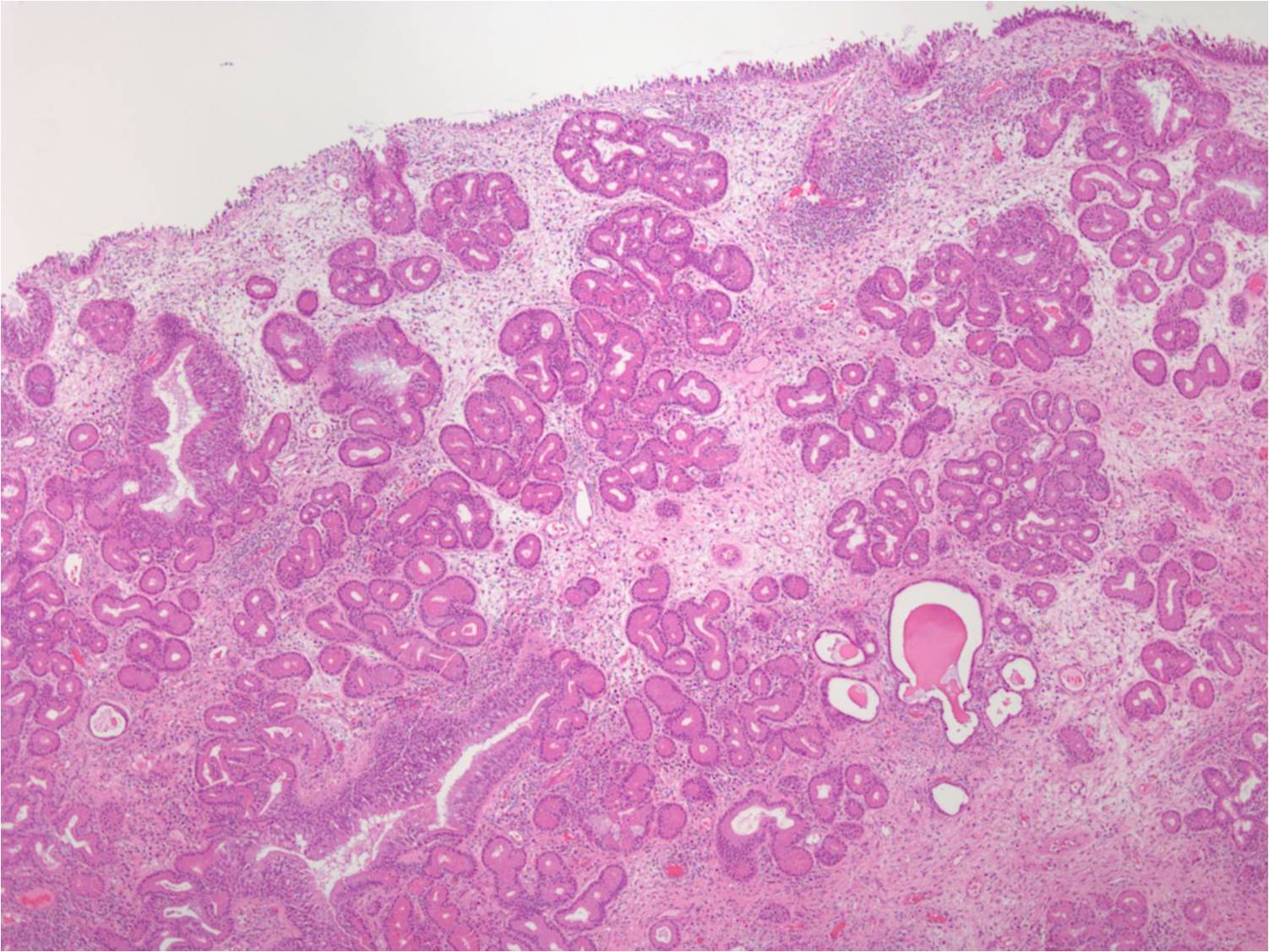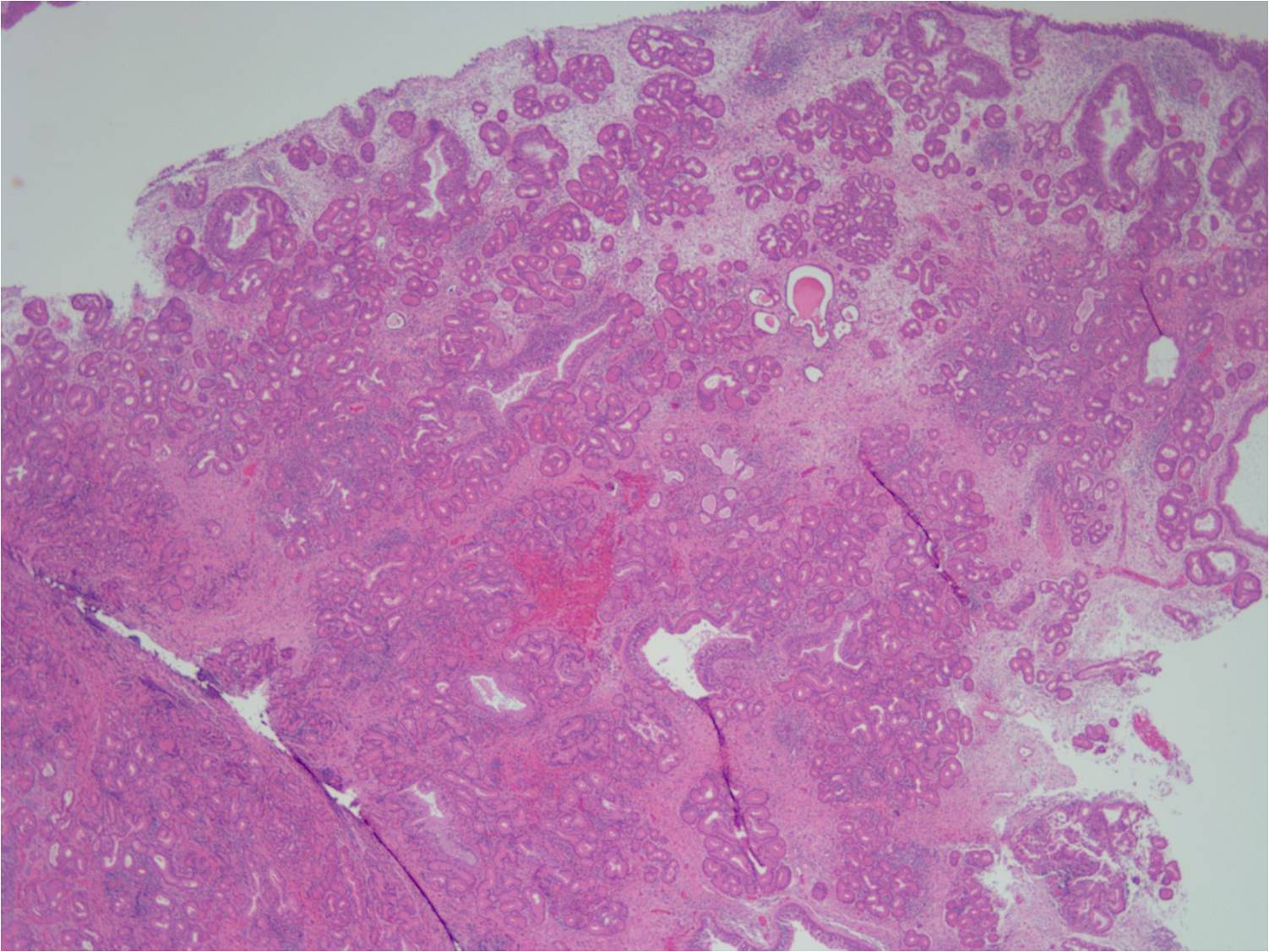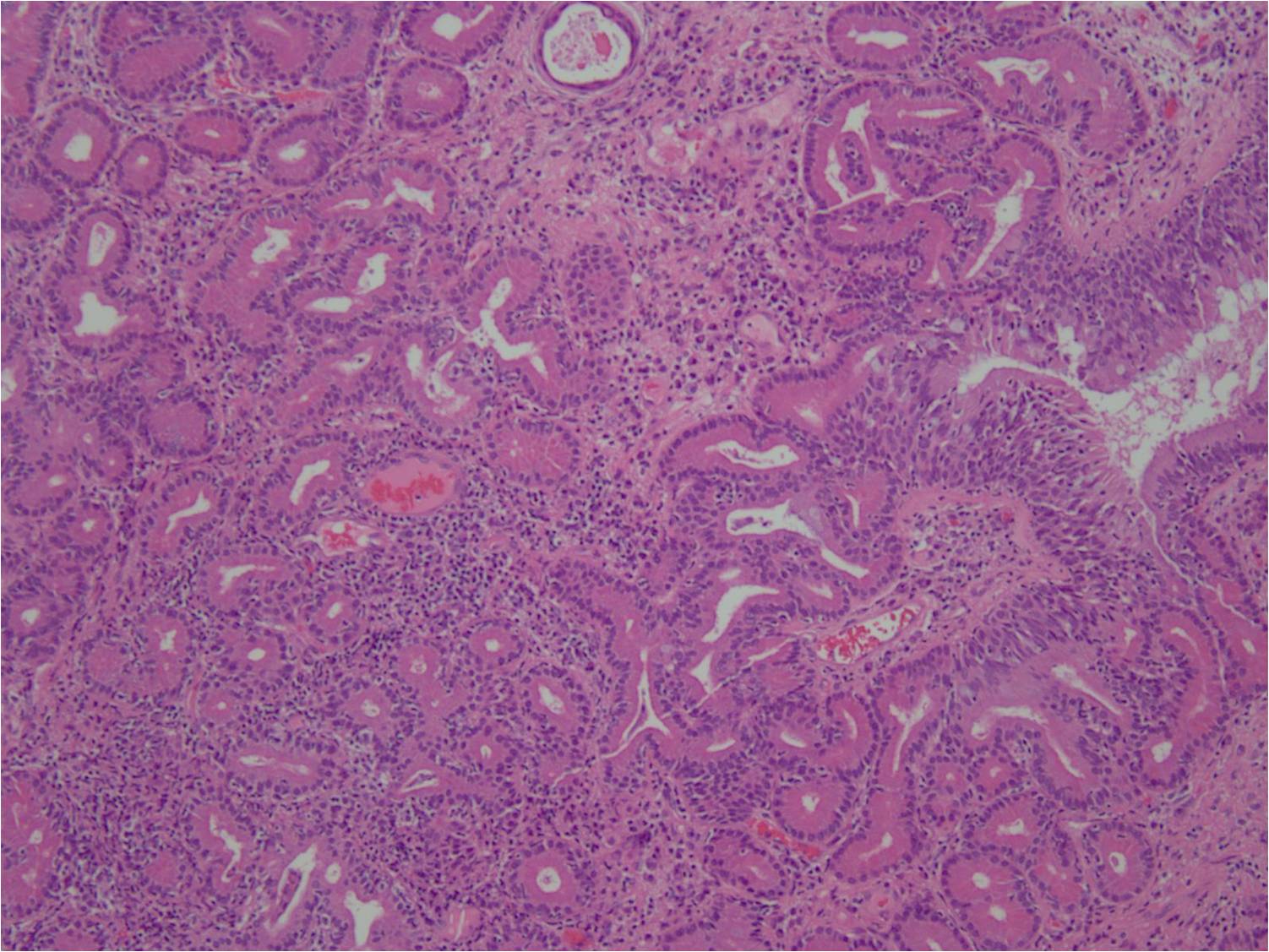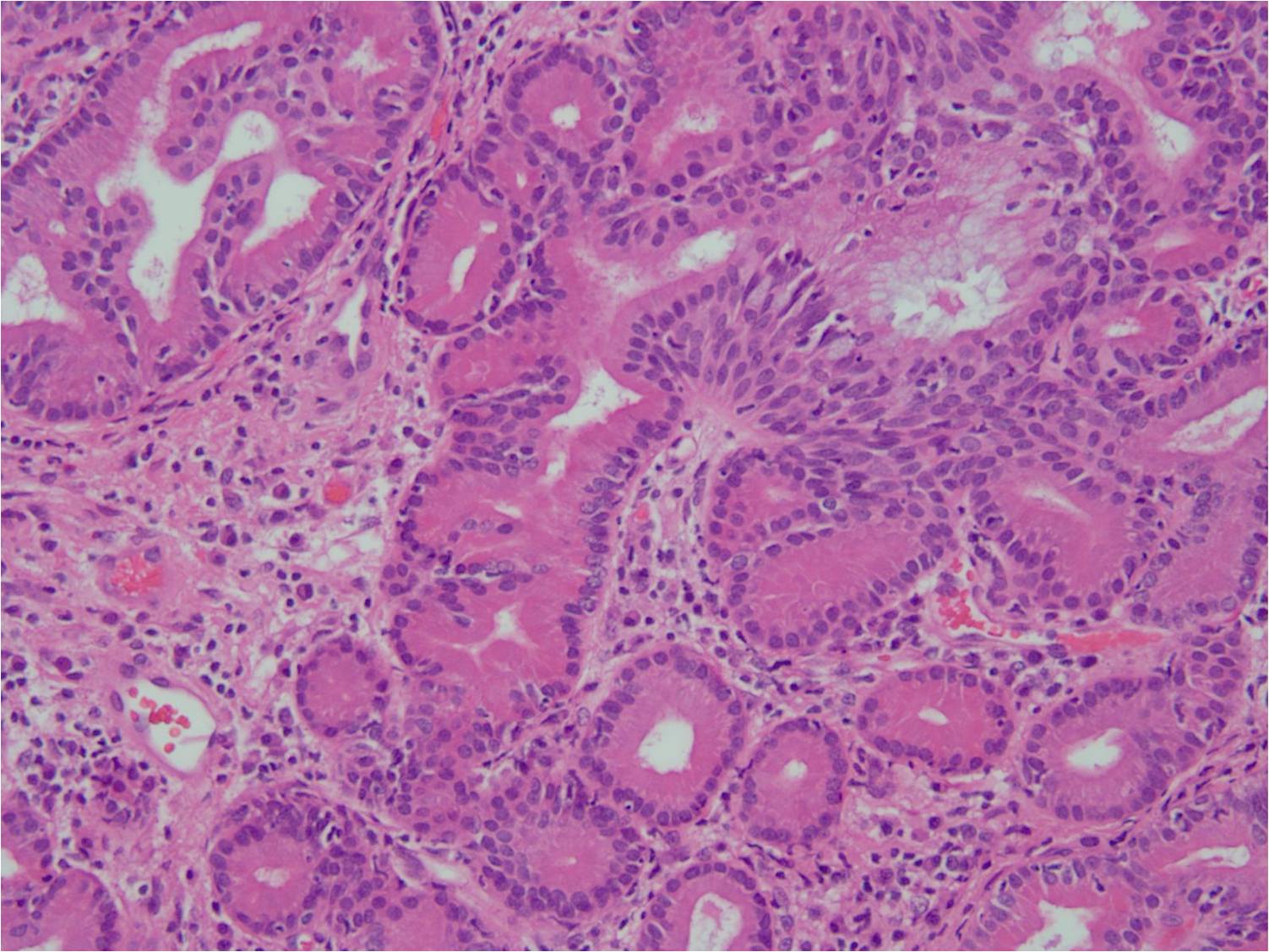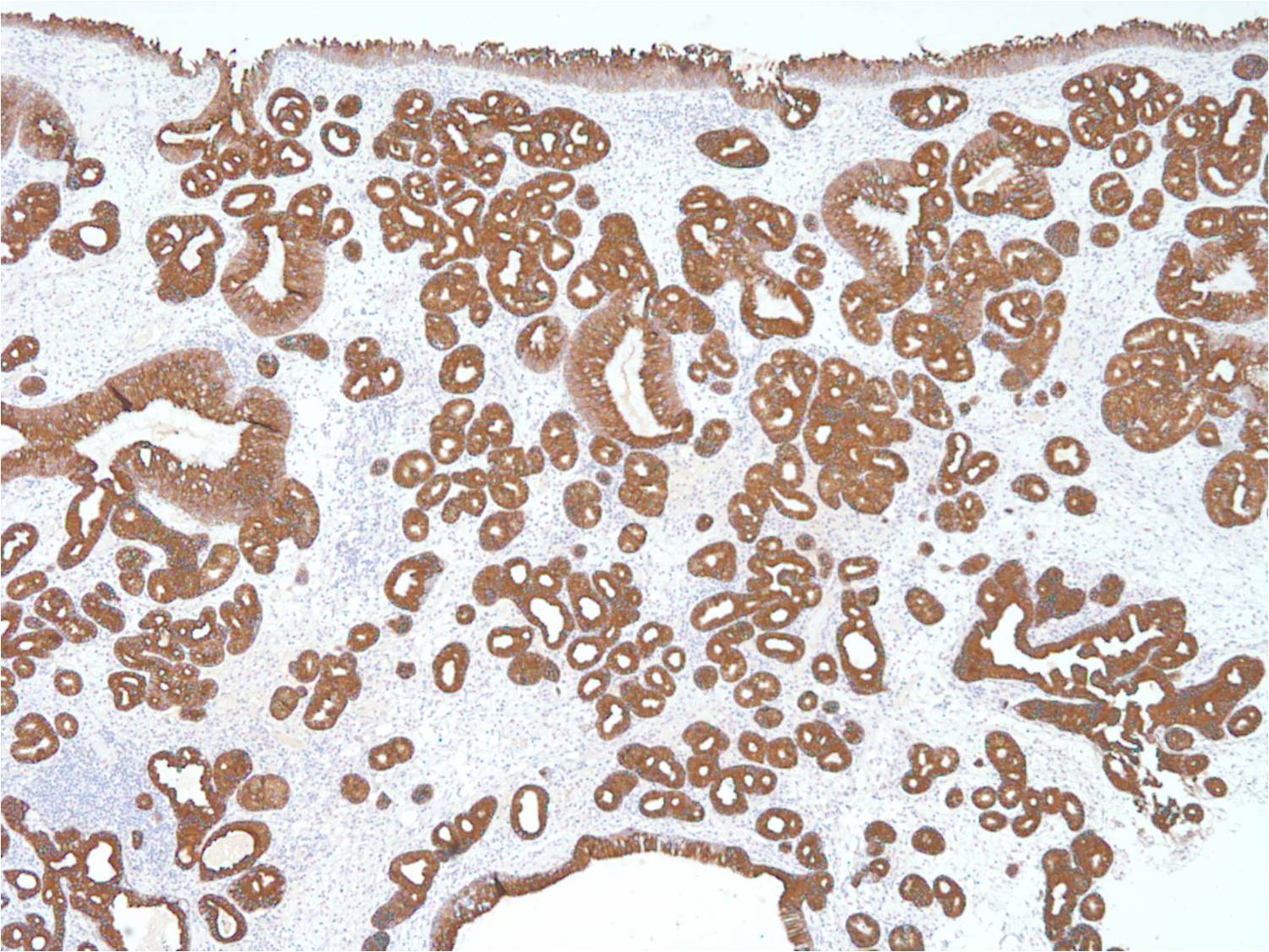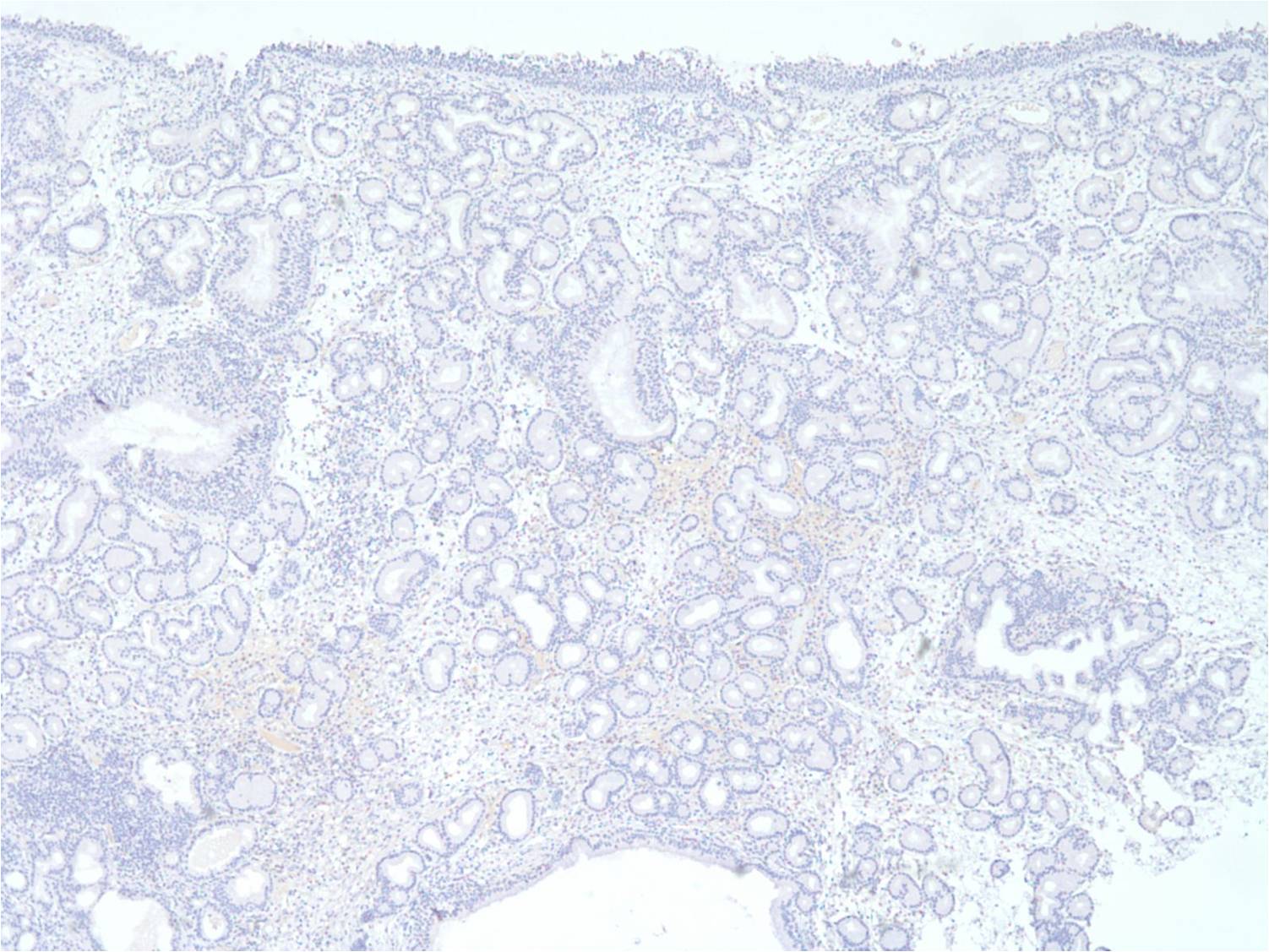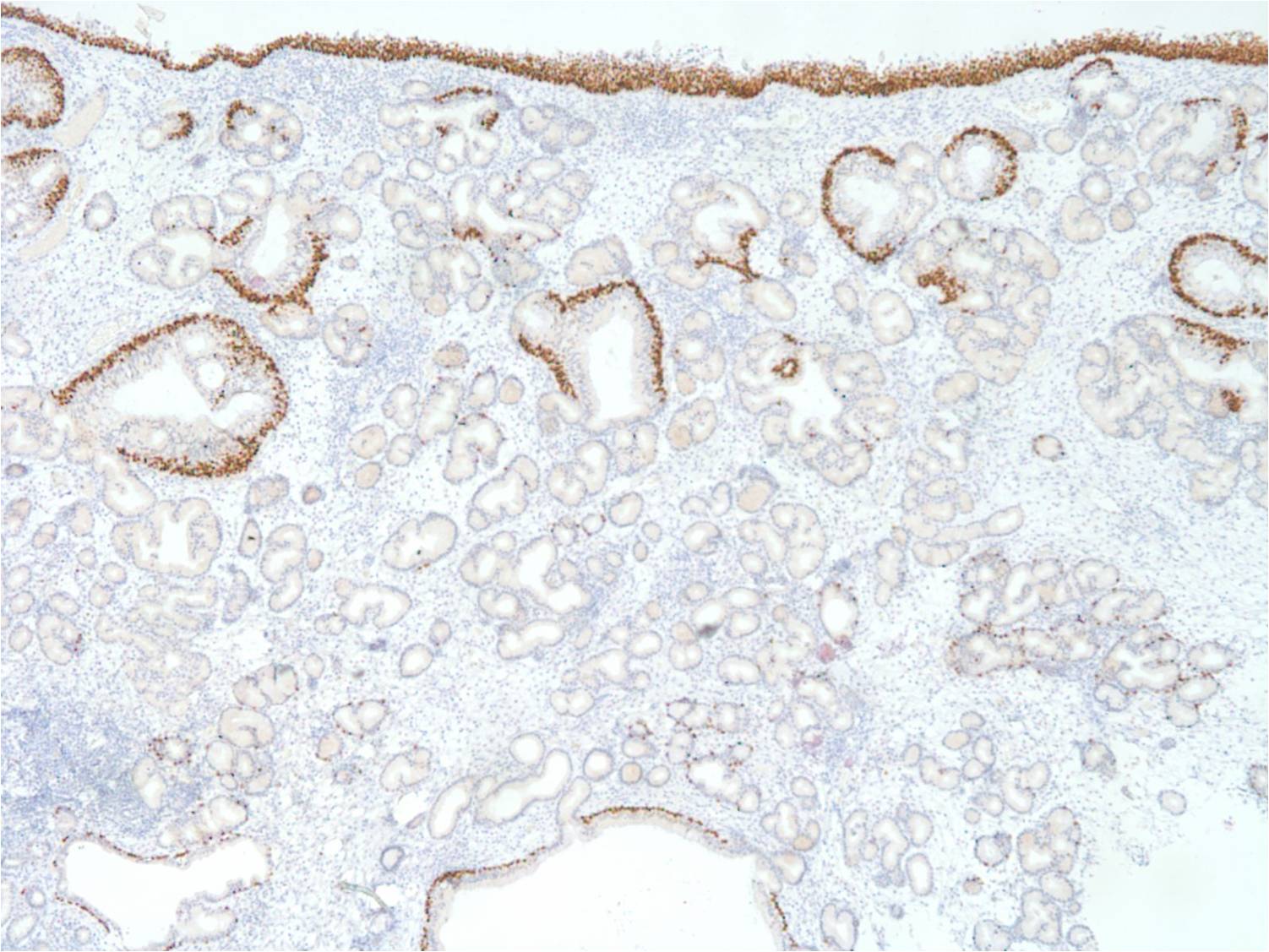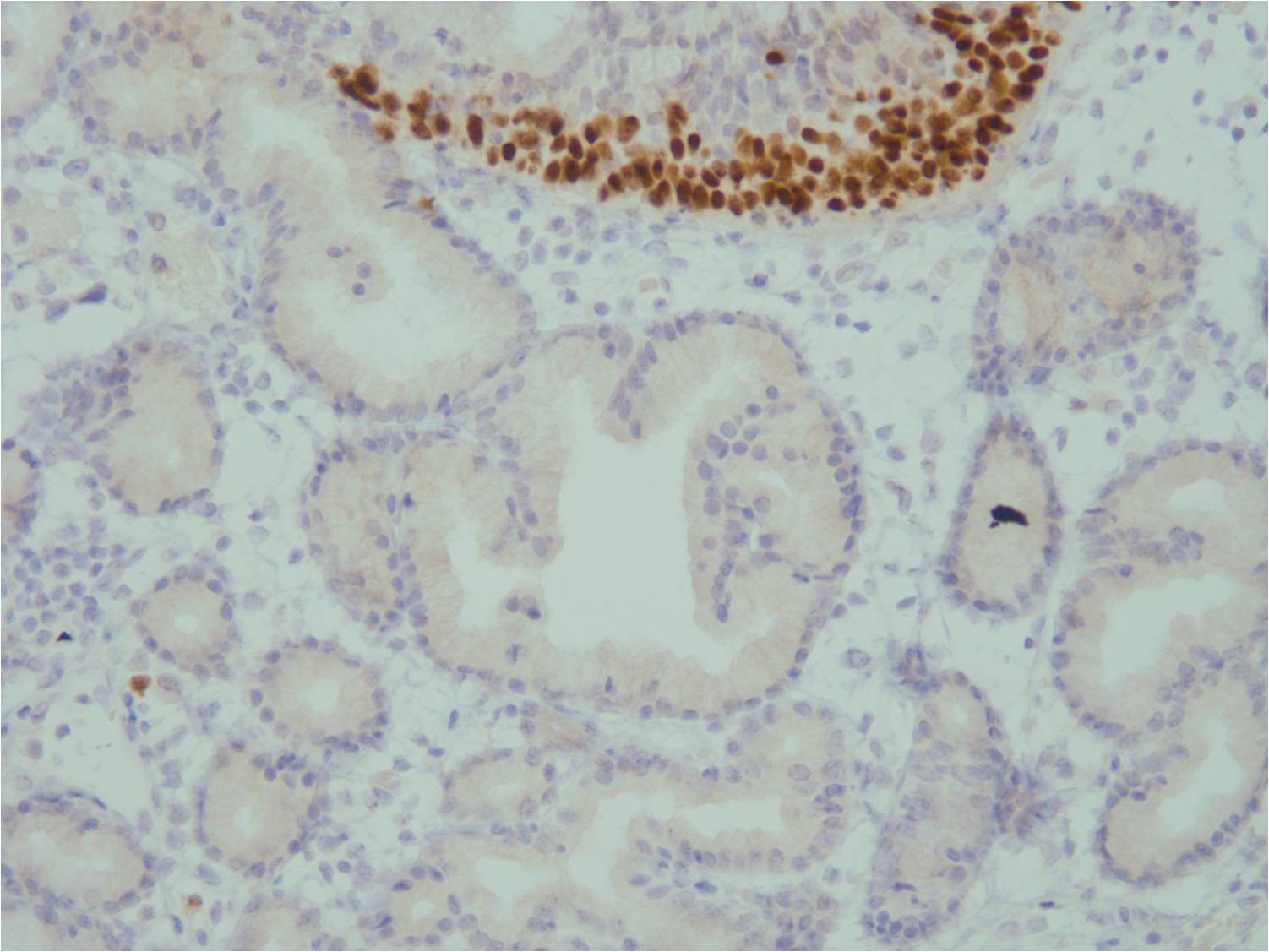18 November 2010 - Case #191
All cases are archived on our website. To view them sorted by case number, diagnosis or category, visit our main Case of the Month page. To subscribe or unsubscribe to Case of the Month or our other email lists, click here.
Thanks to Dr. Ankur Sangoi, El Camino Hospital and Stanford University, California, for contributing this case.
Advertisement
Case #191
Clinical history:
A 54 year old man had a large posterior nasal septal polypoid mass protruding through his right nares, which was excised.
Microscopic images:
What is your diagnosis?
Diagnosis: Seromucinous hamartoma
Discussion:
Seromucinous hamartoma is a rare tumor resembling microglandular adenosis of the breast.
The tumor is composed of a slightly disordered pattern of small serous tubules, ducts and glands with eosinophilic cytoplasm. There is no prominent mucinous component. The stroma is cellular with variable fibrosis and edema. The tubules are lined by one layer of cuboidal cells, without a myoepithelial or basal cell layer. There is no prominent mitotic activity or necrosis.
The glandular cells are usually positive for CK7, CK19, S100, EMA and lysozyme. There is usually no or only focal p63 staining, due to the lack of myoepithelial cells (Virchows Arch 2010;457:727, Histopathology 2009;54:205).
The differential diagnosis includes inflammatory nasal polyp, respiratory epithelial adenomatoid hamartoma and low grade sinonasal adenocarcinoma (Head Neck Pathol 2010;4:77). Inflammatory nasal polyp is composed of edematous lamina propria with a variable inflammatory infiltrate including eosinophils. Respiratory epithelial adenomatoid hamartoma (REAH) is composed of submucosal glands lined by respiratory epithelium, with periglandular hyalinization and a variable connection to the surface. REAH may form a continuum with seromucinous hamartoma, as many cases have features of both entities. Low grade sinonasal adenocarcinoma is a diverse group of bland tubular or papillary tumors which have a potential to recur and an uncertain potential for metastasis. These adenocarcinomas are divided into salivary and non-salivary types. The salivary types (adenoid cystic carcinoma, basal cell adenocarcinoma and epithelial myoepithelial carcinoma) have a well defined myoepithelial component. The low grade nonsalivary types are either intestinal (resemble intestinal epithelium, CK20+, CDX2+) or nonintestinal (back to back glands that are infiltrative).
Excision of a seromucinous hamartoma is usually curative, although these tumors may recur locally.
All cases are archived on our website. To view them sorted by case number, diagnosis or category, visit our main Case of the Month page. To subscribe or unsubscribe to Case of the Month or our other email lists, click here.
Thanks to Dr. Ankur Sangoi, El Camino Hospital and Stanford University, California, for contributing this case.
The Genomic Health OncotypeDX Breast Cancer Assay provides early-stage ER-positive breast cancer patients with an individualized Recurrence Score result that assesses the benefit of chemotherapy and the likelihood of 10-year distant recurrence.
The Recurrence Score is calculated using RT-PCR technology to assess the expression of 21 genes in a patients FPET core biopsy or surgical excision sample. The assay is precise, accurate, and highly reproducible over a wide dynamic range, with a success rate of >97%. The assay is validated in 13 clinical studies involving more than 4000 patients.
For more information, please visit www.oncotypedx.com.
Oncotype DX and Recurrence Score are registered trademarks of Genomic Health, Inc.
Website news:
(1) We are thinking about adding two features - let us know what you think. First is a cell phone application. What would be the most important app for you? Case of the Week, CD Markers, something else? Second, for particular topics, we are thinking of adding side by side images of the topic and other common entities in the differential diagnosis. We would try to highlight the distinguishing features. Call (248/646-0325) or email us (NatPernick@hotmail.com) with your thoughts.
(2) We posted a new article on our Management Page, Revenue as a By-Product of Investment: 6 Factors to Consider When Researching Billing Companies, by Diana R. Brooks, PSA.
(3) Support PathologyOutlines.com by doing your holiday shopping at Amazon.com. Click here, or on any Amazon banner on the left side of our Home Page to visit Amazon.com. By visiting Amazon via these links, they will send us 4-5% of the cost of all items you purchase (out of their profits), at no additional cost to you.
Visit and follow our Blog to see recent updates to the website.
(1) We are thinking about adding two features - let us know what you think. First is a cell phone application. What would be the most important app for you? Case of the Week, CD Markers, something else? Second, for particular topics, we are thinking of adding side by side images of the topic and other common entities in the differential diagnosis. We would try to highlight the distinguishing features. Call (248/646-0325) or email us (NatPernick@hotmail.com) with your thoughts.
(2) We posted a new article on our Management Page, Revenue as a By-Product of Investment: 6 Factors to Consider When Researching Billing Companies, by Diana R. Brooks, PSA.
(3) Support PathologyOutlines.com by doing your holiday shopping at Amazon.com. Click here, or on any Amazon banner on the left side of our Home Page to visit Amazon.com. By visiting Amazon via these links, they will send us 4-5% of the cost of all items you purchase (out of their profits), at no additional cost to you.
Visit and follow our Blog to see recent updates to the website.
Case #191
Clinical history:
A 54 year old man had a large posterior nasal septal polypoid mass protruding through his right nares, which was excised.
Microscopic images:
What is your diagnosis?
Click here for diagnosis and discussion:
Diagnosis: Seromucinous hamartoma
Discussion:
Seromucinous hamartoma is a rare tumor resembling microglandular adenosis of the breast.
The tumor is composed of a slightly disordered pattern of small serous tubules, ducts and glands with eosinophilic cytoplasm. There is no prominent mucinous component. The stroma is cellular with variable fibrosis and edema. The tubules are lined by one layer of cuboidal cells, without a myoepithelial or basal cell layer. There is no prominent mitotic activity or necrosis.
The glandular cells are usually positive for CK7, CK19, S100, EMA and lysozyme. There is usually no or only focal p63 staining, due to the lack of myoepithelial cells (Virchows Arch 2010;457:727, Histopathology 2009;54:205).
The differential diagnosis includes inflammatory nasal polyp, respiratory epithelial adenomatoid hamartoma and low grade sinonasal adenocarcinoma (Head Neck Pathol 2010;4:77). Inflammatory nasal polyp is composed of edematous lamina propria with a variable inflammatory infiltrate including eosinophils. Respiratory epithelial adenomatoid hamartoma (REAH) is composed of submucosal glands lined by respiratory epithelium, with periglandular hyalinization and a variable connection to the surface. REAH may form a continuum with seromucinous hamartoma, as many cases have features of both entities. Low grade sinonasal adenocarcinoma is a diverse group of bland tubular or papillary tumors which have a potential to recur and an uncertain potential for metastasis. These adenocarcinomas are divided into salivary and non-salivary types. The salivary types (adenoid cystic carcinoma, basal cell adenocarcinoma and epithelial myoepithelial carcinoma) have a well defined myoepithelial component. The low grade nonsalivary types are either intestinal (resemble intestinal epithelium, CK20+, CDX2+) or nonintestinal (back to back glands that are infiltrative).
Excision of a seromucinous hamartoma is usually curative, although these tumors may recur locally.



